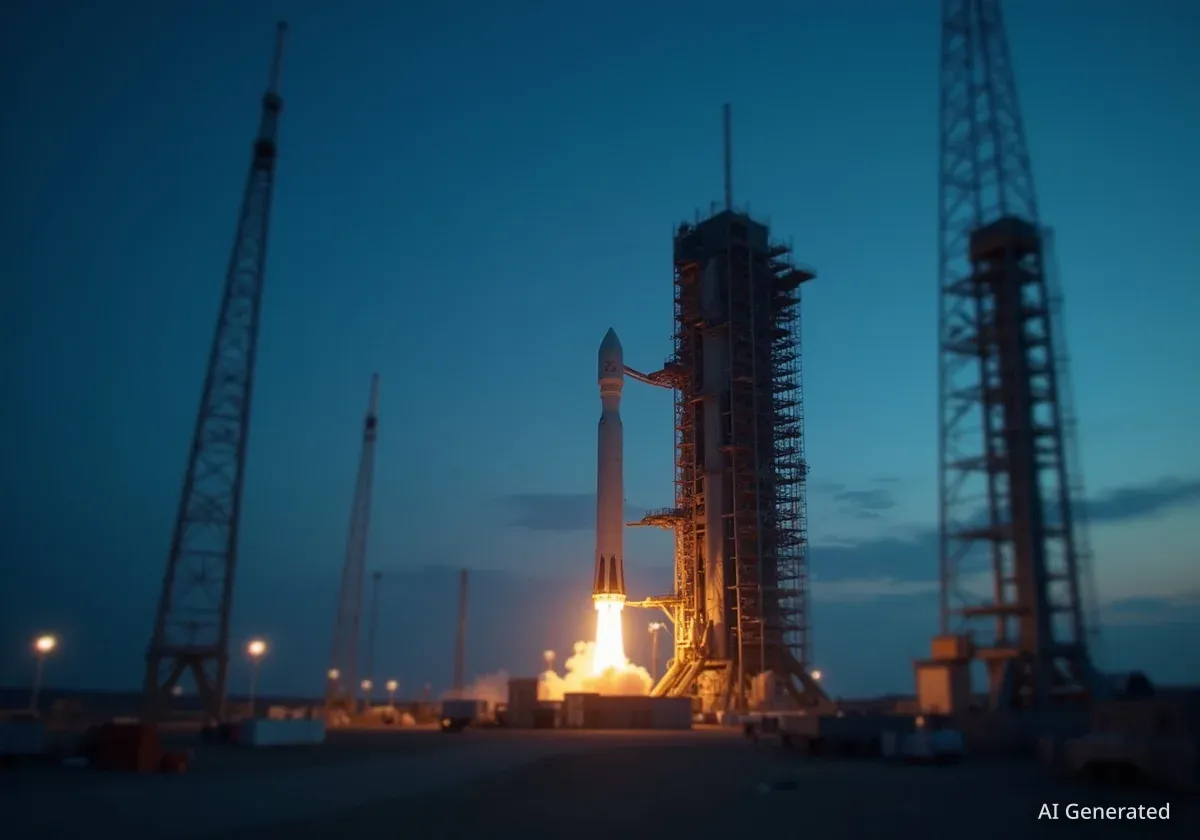A recent White House proposal suggests a 24% budget reduction for NASA for the 2026 fiscal year, a move that would significantly impact the agency's scientific research. Prominent science advocates, including Bill Nye, are actively opposing the cuts, warning they could halt critical space exploration missions and undermine U.S. leadership in space.
Key Takeaways
- A proposal seeks to cut NASA's overall budget by 24%, from approximately $24.8 billion to $18.8 billion.
- The Science Mission Directorate faces the largest reduction, with a proposed 47% cut to its funding.
- Over 40 projects, including the Mars Sample Return and Juno missions, have been identified for potential defunding.
- Scientists and legislators have gathered to protest the cuts, citing risks to U.S. competitiveness with other nations like China.
Details of the Proposed NASA Budget Reduction
The administration's budget proposal for fiscal year 2026 outlines a substantial decrease in funding for the National Aeronautics and Space Administration. The plan would reduce the agency's total budget by nearly a quarter, from its current level of around $24.8 billion down to $18.8 billion.
The most severe cuts are aimed at NASA's Science Mission Directorate. This division, responsible for some of the agency's most high-profile research, is facing a proposed reduction of approximately $6 billion. This represents a 47% cut to its budget, a figure that has caused significant alarm within the scientific community.
By the Numbers
- Overall NASA Cut: 24%
- Total Budget Reduction: ~$6 billion
- Science Directorate Cut: 47%
- Projects Flagged: 40+
Scientific Community Protests Potential Cuts
In response to the proposal, a coalition of scientists, space exploration advocates, and legislators convened on Capitol Hill to voice their opposition. Leading the charge was Bill Nye, the CEO of The Planetary Society, a nonprofit organization dedicated to space exploration.
Nye expressed grave concerns about the long-term impact of such a drastic funding reduction. He argued that the cuts would not merely delay scientific progress but could bring it to a complete stop for the United States.
"We’re not talking about delays in scientific exploration, we’re talking about the end of it," Nye stated during a press conference. "While we’re checking out, our competitors are checking in."
The Planetary Society described the proposed 47% cut to the science budget as an "extinction-level event for space exploration." More than 300 advocates and representatives from 20 partner organizations, including the American Astronomical Society and the American Geophysical Union, joined the demonstration to support continued funding for NASA's programs.
What is the Science Mission Directorate?
NASA's Science Mission Directorate is the division that manages and funds the agency's robotic exploration and scientific research. It is responsible for iconic missions like the James Webb Space Telescope, the Perseverance rover on Mars, and the Landsat satellites that monitor Earth. Its work covers planetary science, Earth science, heliophysics, and astrophysics.
Key Missions and Programs Under Threat
The budget proposal specifically identifies more than 40 ongoing and planned projects for defunding, labeling several as "unaffordable." The document states that the goal is to create a "leaner Science program that reflects a commitment to fiscal responsibility."
Projects Facing Termination
Several high-profile missions are on the list of programs that could be canceled. These include:
- Mars Sample Return: An ambitious mission to bring back rock and soil samples from Mars for detailed study on Earth.
- MAVEN Orbiter: A spacecraft currently studying the Martian atmosphere to understand how the planet lost its air and water.
- Juno Mission: An orbiter studying the planet Jupiter, providing insights into the formation of giant planets and our solar system.
Casey Dreier, the chief of space policy at The Planetary Society, emphasized that his organization's goal is to protect these existing investments. "This is no new money, it's no changes in policy, it's just to continue these projects that we've already invested in, already paid for and are currently returning in fantastic science," Dreier said.
The proposal also calls for the elimination of funding for climate-focused aviation projects and the complete defunding of NASA's Office of STEM Engagement, which handles educational outreach programs.
Concerns Over International Competitiveness
A recurring theme among opponents of the budget cut is the potential for the United States to lose its leadership role in space exploration, particularly to China. Bill Nye warned of an impending "Sputnik moment" if the U.S. scales back its ambitions while other nations accelerate theirs.
"The China National Space Administration is going fast, doing a lot of extraordinary missions very similar, almost mission for mission, to what the United States is doing," Nye commented. He predicted that Chinese astronauts, or Taikonauts, could be on the moon within the next five years.
These sentiments were shared by legislators at the press conference. U.S. Representative Glenn Ivey, D-Md., noted the contrast between the U.S. proposal and China's investments in science and technology.
"We’re falling behind with respect to China," Rep. Ivey said. "They’re pushing money and engineers and scientists towards advancing science in China, competing against us, while we’re doing the exact opposite."
The Path Forward in Congress
Despite the administration's proposal, the final budget decision rests with Congress. According to advocates, there is already significant bipartisan resistance to the proposed reductions within both the House of Representatives and the Senate.
Casey Dreier reported that legislative bodies in both chambers have shown a "near-full rejection of the proposed cuts to NASA science." The primary objective for The Planetary Society and its allies is now to ensure that this legislative opposition is formalized into law.
Bill Nye urged lawmakers to finalize their work on the budget. "Finish the job," he said. "Both the Senate and House have bills that reject these cuts, pushing back against these cuts, but we want them to sign it into law." The outcome of this legislative process will determine the future of many of NASA's key scientific endeavors for years to come.





